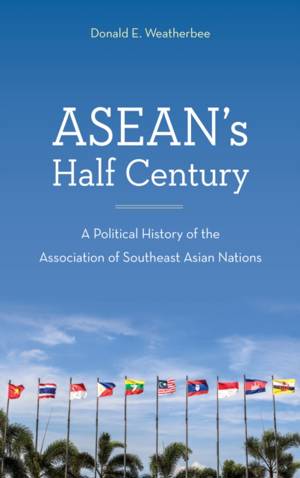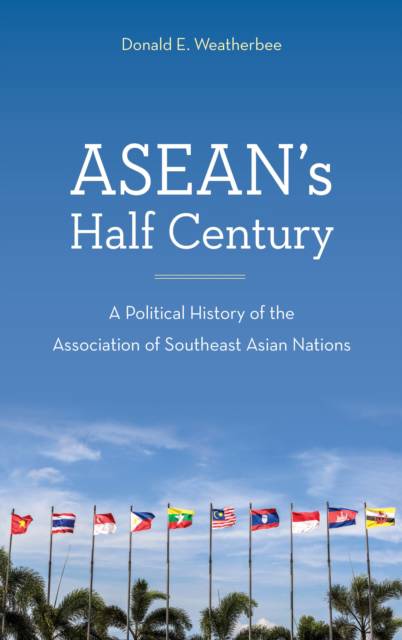
- Afhalen na 1 uur in een winkel met voorraad
- Gratis thuislevering in België vanaf € 30
- Ruim aanbod met 7 miljoen producten
- Afhalen na 1 uur in een winkel met voorraad
- Gratis thuislevering in België vanaf € 30
- Ruim aanbod met 7 miljoen producten
Zoeken
ASEAN's Half Century
A Political History of the Association of Southeast Asian Nations
Donald E Weatherbee
Paperback | Engels
€ 67,45
+ 134 punten
Uitvoering
Omschrijving
This authoritative book offers a critical analysis of the conventional wisdom regarding ASEAN and its efforts to transform Southeast Asia's security environment. Dispelling the myths surrounding ASEAN fifty years after its founding, this book will be invaluable for all readers interested in ASEAN's role in the broader Asia-Pacific region.
Specificaties
Betrokkenen
- Auteur(s):
- Uitgeverij:
Inhoud
- Aantal bladzijden:
- 292
- Taal:
- Engels
Eigenschappen
- Productcode (EAN):
- 9781442272521
- Verschijningsdatum:
- 29/04/2019
- Uitvoering:
- Paperback
- Formaat:
- Trade paperback (VS)
- Afmetingen:
- 152 mm x 229 mm
- Gewicht:
- 430 g

Alleen bij Standaard Boekhandel
+ 134 punten op je klantenkaart van Standaard Boekhandel
Beoordelingen
We publiceren alleen reviews die voldoen aan de voorwaarden voor reviews. Bekijk onze voorwaarden voor reviews.








